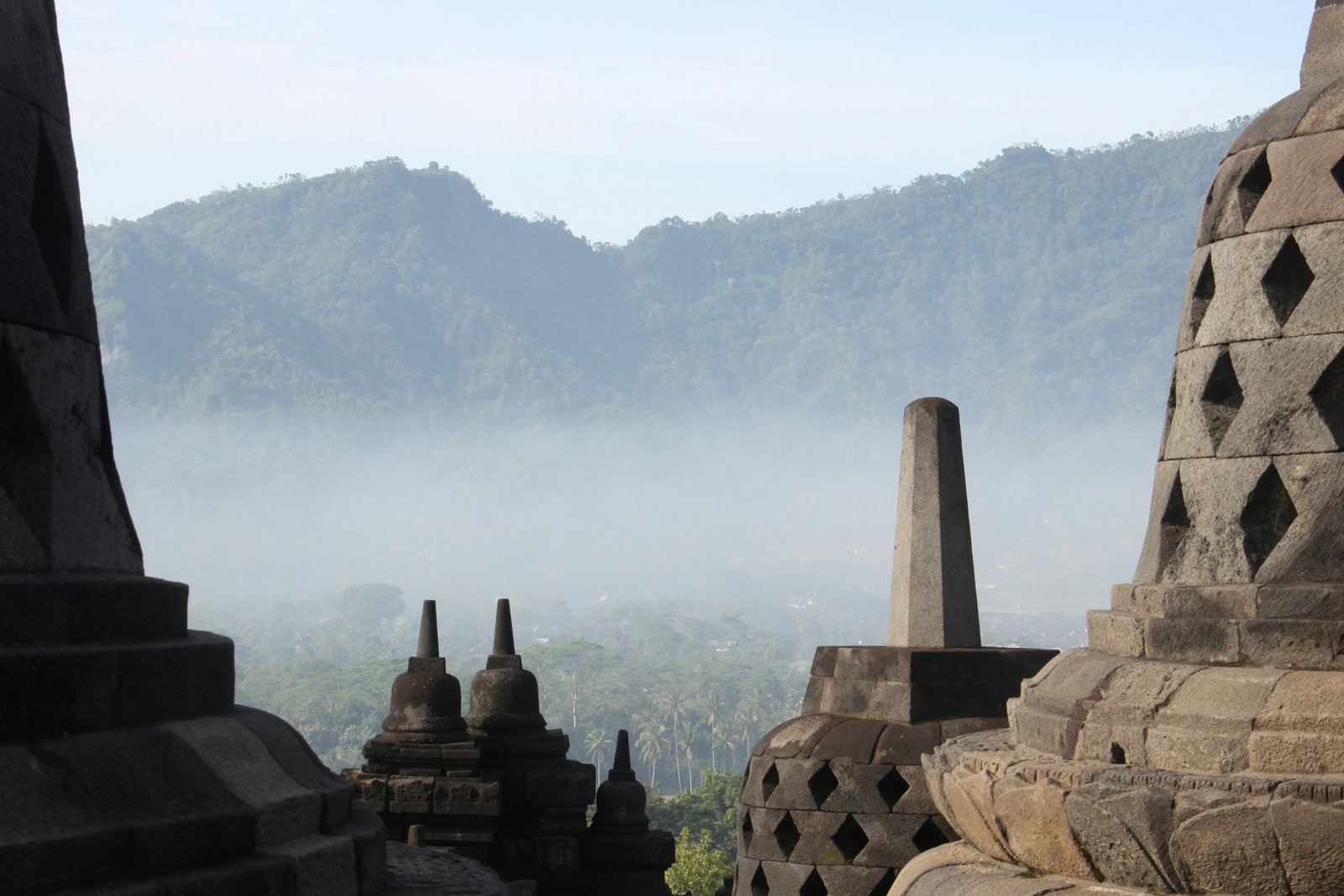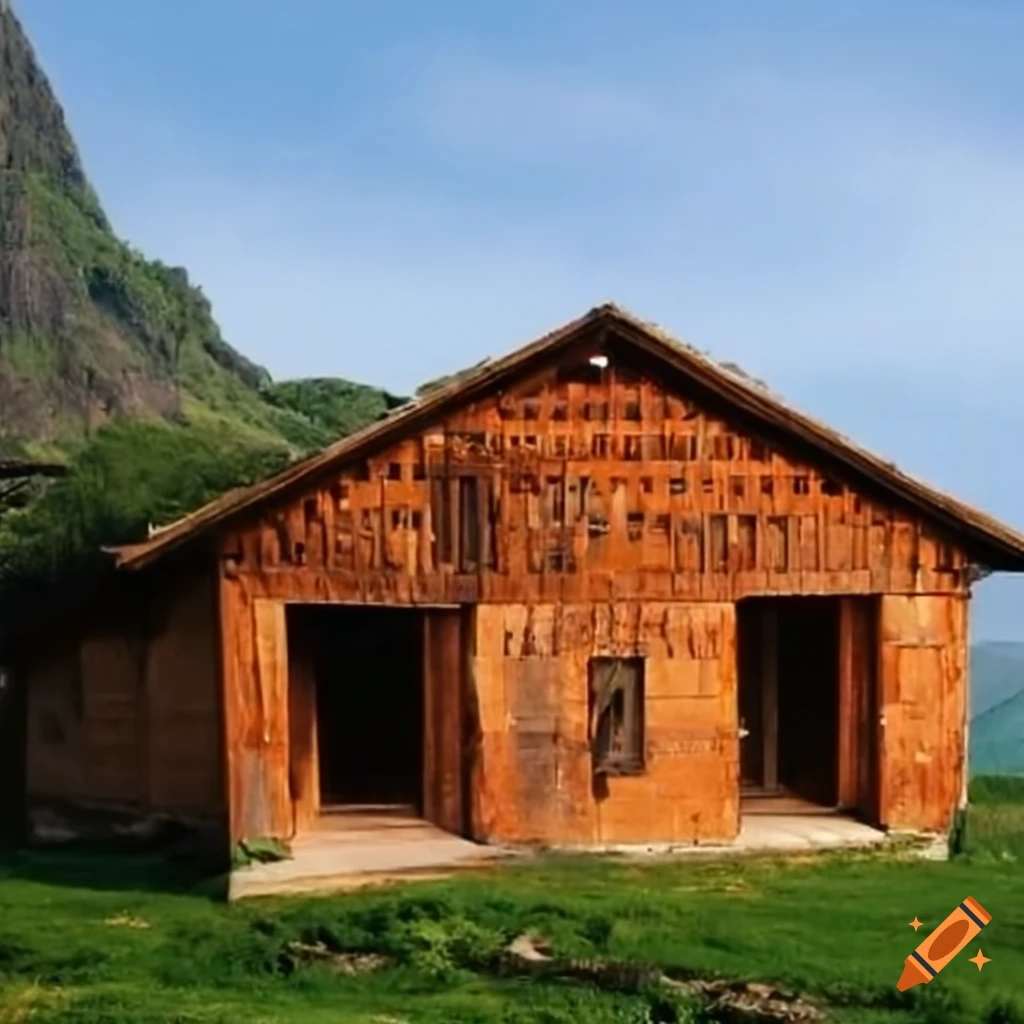Introduction to Exotic Travel
Traveling to exotic destinations offers a unique opportunity to explore the world in ways that conventional tourist spots simply cannot match. These locations captivate the imagination with their distinct cultural, geographical, and historical attributes, presenting a compelling allure to adventurers and curious travelers alike. But what exactly makes a destination ‘exotic’?
Exotic destinations are often characterized by their distinctiveness and rarity. They can be defined by their rich cultural heritage, unusual landscapes, or historical significance that stands apart from more familiar locales. For some, this might mean venturing into the lush rainforests of the Amazon or exploring the ancient ruins in the heart of Cambodia. For others, it could be the vibrant street markets of Marrakech or the remote, serene beaches of the Maldives.
The excitement of traveling to less conventional locations lies in the unknown and the unexpected. Unlike popular tourist spots, exotic destinations often provide a sense of discovery and adventure. They offer experiences that are far removed from the everyday, allowing travelers to immerse themselves in new traditions, sample unique cuisines, and witness breathtaking natural wonders.
Moreover, exotic travel often involves interacting with local communities and learning about their ways of life, which can be both educational and enriching. This type of travel fosters a deeper appreciation for diversity and a greater understanding of the world. It also contributes to the preservation of these unique cultures and environments, as tourism can often provide much-needed economic support.
As we embark on this journey through some of the most exotic places to travel, we will uncover the hidden gems that await intrepid explorers. From tropical paradises to historic landmarks, these destinations promise unforgettable experiences that will leave lasting impressions. So, prepare to be inspired and let your sense of adventure guide you to the extraordinary and the exotic.
The Enchanting Islands of the Maldives
The Maldives, an archipelago of over 1,000 coral islands, is renowned for its breathtaking beauty and serene atmosphere. With crystal-clear waters, pristine white-sand beaches, and luxurious overwater bungalows, this tropical paradise offers a unique and unforgettable travel experience. The vibrant marine life, including colorful coral reefs and diverse aquatic species, makes the Maldives a top destination for snorkeling and diving enthusiasts. Visitors can immerse themselves in the underwater world, exploring the rich biodiversity that lies beneath the surface.
Apart from its natural beauty, the Maldives is also known for its exclusive and luxurious resorts. These accommodations often feature private villas, personal butlers, and world-class amenities. Some of the top-rated resorts include the Soneva Fushi, known for its eco-friendly luxury, and the Conrad Maldives Rangali Island, famous for its underwater dining experience. These resorts provide a perfect blend of comfort and adventure, allowing guests to enjoy the best of both worlds.
One of the most popular activities in the Maldives is exploring private islands. Many resorts offer boat trips to secluded islands, where visitors can enjoy a day of sunbathing, picnicking, and swimming in complete privacy. Additionally, the Maldives is a prime location for water sports such as jet-skiing, windsurfing, and paddleboarding, catering to both thrill-seekers and those looking for a more relaxed experience.
The best time to visit the Maldives is during the dry season, from November to April, when the weather is sunny and the sea is calm. This period is ideal for outdoor activities and enjoying the island’s natural beauty. However, even during the off-season, the Maldives remains a captivating destination, with fewer crowds and more opportunities for intimate and tranquil experiences.
Exploring the Mystical Landscapes of Bhutan
Bhutan, nestled in the eastern Himalayas, is a land of enchanting beauty and profound cultural heritage. This small yet remarkable kingdom is renowned for its ancient monasteries, majestic fortresses known as Dzongs, and vibrant festivals that reflect its rich history and traditions. The Bhutanese way of life is deeply intertwined with Buddhism, which is evident in the country’s architectural marvels and spiritual ambiance.
One of the most iconic landmarks in Bhutan is the Tiger’s Nest Monastery, or Paro Taktsang, perched precariously on a cliffside 3,000 meters above sea level. This sacred site is not only a testament to Bhutanese engineering but also a place of pilgrimage for many. The trek to the monastery offers breathtaking views of the Paro Valley and a sense of serenity that can only be found in such a mystical setting.
The country’s commitment to preserving its cultural heritage is exemplified by its numerous Dzongs, which serve as both administrative centers and monastic complexes. These impressive structures, such as the Punakha Dzong and the Thimphu Tashichho Dzong, are architectural masterpieces that offer a glimpse into Bhutan’s past and present.
Bhutan is also known for its unique approach to development, guided by the philosophy of Gross National Happiness (GNH). This holistic concept prioritizes the well-being of its citizens over economic growth, ensuring that tourism in Bhutan is sustainable and respectful of its cultural and natural resources. Travelers will notice the emphasis on environmental conservation, cultural preservation, and community well-being, which makes visiting Bhutan a truly enriching experience.
For those planning a trip to Bhutan, it is essential to know that tourism is regulated to maintain the country’s pristine environment and cultural integrity. Visitors must book their travel through a licensed Bhutanese tour operator, ensuring a guided experience that covers all the necessary permits and accommodations. The best time to visit is during one of the many colorful festivals, such as the Paro Tshechu or Thimphu Tshechu, where one can witness traditional dances, music, and rituals that are intrinsic to Bhutanese culture.
Overall, Bhutan offers an unparalleled journey through its mystical landscapes and cultural treasures, making it a must-visit destination for those seeking a unique and meaningful travel experience.
Amazon Rainforest Adventures in Brazil
The Amazon Rainforest, stretching across Brazil, is one of the most exotic places to travel, offering a unique glimpse into an incredibly diverse ecosystem. Home to an astonishing array of flora and fauna, the Amazon is a vital repository of the world’s biodiversity. Visitors can marvel at towering kapok trees, colorful orchids, and the dense canopy that shelters countless species, including jaguars, sloths, and a variety of vibrant birdlife.
Beyond its natural wonders, the Amazon Rainforest is also home to numerous indigenous communities. These communities have coexisted with the forest for centuries, possessing a deep understanding of its resources and ecosystems. Engaging with these communities through eco-tourism can provide enriching cultural exchanges and support local economies.
Eco-tourism in the Amazon offers several exciting opportunities for adventure seekers. Guided jungle tours provide an immersive experience into the heart of the rainforest, where expert guides share their knowledge about wildlife and plant life. For those looking to explore the waterways, river cruises along the Amazon River offer a serene way to spot pink river dolphins, caimans, and an array of aquatic birds. Wildlife spotting activities, such as night safaris and canopy walks, allow travelers to observe the forest’s nocturnal inhabitants and the breathtaking views from above the treetops.
Given the delicate nature of the Amazon’s ecosystem, sustainable travel practices are crucial. Travelers are encouraged to choose eco-friendly tour operators that prioritize conservation and minimize their environmental footprint. Responsible travel includes minimizing waste, respecting wildlife, and supporting conservation efforts.
Accessing the Amazon Rainforest typically involves flying into major Brazilian cities such as Manaus or Belém, which serve as gateways to the forest. From there, various tour operators offer packages tailored to different interests and levels of adventure. Some reputable operators include Amazon Nature Tours, Jungle Expeditions, and Rainforest Cruises, each providing unique experiences while promoting sustainable tourism.
The Cultural Riches of Marrakech, Morocco
Marrakech, often referred to as the “Red City” due to its distinctive ochre walls, stands as one of Morocco’s most captivating destinations. The city is a vibrant tapestry of history, culture, and sensory delights, offering an array of experiences that appeal to travelers seeking both adventure and relaxation.
One of the most iconic landmarks in Marrakech is Jemaa el-Fnaa, the main square located in the heart of the Medina. By day, it buzzes with snake charmers, henna tattoo artists, and fresh juice vendors. As the sun sets, the square transforms into a lively night market, filled with food stalls offering traditional Moroccan dishes such as tagine, couscous, and pastilla. The atmosphere is enhanced by the sounds of local musicians and storytellers, making it a must-visit for an authentic cultural experience.
No visit to Marrakech would be complete without exploring the Koutoubia Mosque, the largest mosque in the city, renowned for its stunning minaret that dominates the skyline. Although non-Muslims are not permitted inside, the surrounding gardens provide a serene spot to appreciate the mosque’s architectural beauty and historical significance.
For those seeking tranquility amidst the city’s hustle and bustle, the Majorelle Garden is an oasis of calm. Designed by French painter Jacques Majorelle and later restored by fashion designer Yves Saint Laurent, the garden is home to an impressive collection of exotic plants, fountains, and vibrant blue buildings. It’s a perfect retreat for nature lovers and photography enthusiasts.
When navigating the labyrinthine alleys of the Medina, it’s essential to embrace the art of bargaining while shopping in the souks. These bustling markets offer a plethora of local crafts, including pottery, textiles, and leather goods. Engaging with local artisans not only provides an opportunity to purchase unique souvenirs but also to learn about traditional Moroccan craftsmanship.
Finally, no trip to Marrakech is complete without indulging in the rich flavors of Moroccan cuisine. From street food to fine dining, the city’s culinary scene offers a diverse array of dishes that are sure to tantalize your taste buds. Be sure to try a traditional Moroccan mint tea, often served with a generous helping of hospitality.
Marrakech’s cultural riches make it an irresistible destination for travelers seeking an authentic and immersive experience. Whether exploring historic landmarks, savoring local cuisine, or simply soaking in the vibrant atmosphere, this city promises an unforgettable journey.
Discovering the Untouched Beauty of Madagascar
Madagascar, the world’s fourth-largest island, is a treasure trove of unique biodiversity. It is home to an astonishing array of species, with over 90% of its wildlife found nowhere else on Earth. This unparalleled natural wealth makes Madagascar an essential destination for nature enthusiasts and eco-conscious travelers alike.
One of the most iconic sites in Madagascar is the Avenue of the Baobabs. Located in the Menabe region, this striking landscape features centuries-old baobab trees that stand like ancient sentinels along a dirt road. The best time to visit this extraordinary locale is during sunrise or sunset when the golden light enhances the majestic silhouettes of the towering trees, creating a truly magical atmosphere.
Ranomafana National Park is another must-see destination. Nestled in the southeastern part of the island, this park is a haven for biodiversity. It boasts lush rainforests, cascading waterfalls, and an abundance of wildlife, including the critically endangered golden bamboo lemur. Guided tours are available, offering visitors an insightful experience into the park’s rich ecosystem. The best time to explore Ranomafana is during the dry season, from May to October, when the weather is most favorable for trekking.
For those seeking relaxation, the beaches of Nosy Be offer a perfect retreat. This island off Madagascar’s northwest coast is renowned for its crystal-clear waters, vibrant coral reefs, and white sand beaches. Nosy Be is also a hub for marine activities such as snorkeling, diving, and whale watching. The island’s warm, tropical climate makes it an ideal year-round destination, though the months from April to December are particularly pleasant.
Madagascar’s commitment to conservation is evident through its numerous protected areas and ongoing efforts to preserve its unique ecosystems. Travelers are encouraged to adopt eco-friendly practices to minimize their impact. Simple actions like using reusable water bottles, supporting local conservation organizations, and respecting wildlife habitats can significantly contribute to the island’s conservation goals.
In summary, Madagascar offers an unparalleled experience for those seeking to immerse themselves in nature’s wonders. With its unique biodiversity, stunning landscapes, and emphasis on conservation, it stands as a beacon for sustainable travel. Whether exploring the awe-inspiring Avenue of the Baobabs, trekking through Ranomafana National Park, or relaxing on Nosy Be’s pristine beaches, Madagascar promises an unforgettable adventure for every traveler.
The Ancient Temples and Modern Wonders of Cambodia
Cambodia, a country steeped in rich history and culture, offers an intriguing blend of ancient and modern attractions. At the heart of its historic allure lies Angkor Wat, the world’s largest religious monument. Built in the early 12th century by King Suryavarman II, Angkor Wat is an architectural marvel that epitomizes the zenith of Khmer architectural prowess. The temple complex, initially dedicated to the Hindu god Vishnu, was later transformed into a Buddhist site. Its intricate bas-reliefs and towering spires capture the spiritual essence and artistic achievements of the Khmer Empire. Visiting Angkor Wat at sunrise is a quintessential experience, providing a majestic view as the first light of day illuminates the temple’s grandeur.
Beyond Angkor Wat, Cambodia’s capital city, Phnom Penh, and the vibrant town of Siem Reap offer a fascinating juxtaposition of ancient heritage and modernity. Phnom Penh, once known as the “Pearl of Asia,” is home to the Royal Palace, Silver Pagoda, and the National Museum, which houses an extensive collection of Khmer art. Siem Reap, the gateway to Angkor, is equally enchanting with its bustling night markets, chic cafes, and contemporary art galleries.
The Mekong River, one of Southeast Asia’s longest rivers, plays a pivotal role in Cambodian life. The river is not only vital for agriculture and fishing but also offers unique travel experiences. River cruises along the Mekong provide an immersive glimpse into rural Cambodian life, with stops at floating villages and traditional markets. For a more intimate experience, rural homestays offer travelers the opportunity to engage with local communities, learn about traditional crafts, and enjoy authentic Cambodian cuisine.
Practical travel information is essential for visitors planning a trip to Cambodia. The best time to visit is during the dry season, from November to April, when the weather is most favorable. Cambodia’s official currency is the Riel, but US dollars are widely accepted. Visas can be obtained on arrival or through an e-visa service. While exploring the temples, modest attire is recommended to respect cultural norms. Cambodia’s warm hospitality, coupled with its rich cultural tapestry, ensures a memorable and enriching travel experience.
Conclusion
Traveling to exotic destinations offers a unique blend of adventure, cultural immersion, and breathtaking natural beauty. From the pristine beaches of the Maldives to the mystical landscapes of Bhutan, each exotic locale provides an unparalleled experience that enriches the traveler’s soul. As highlighted throughout this guide, the allure of these destinations lies not only in their aesthetic appeal but also in their rich cultural tapestry and biodiversity.
While the excitement of exploring new territories is undeniable, it is crucial to approach such travels with a mindset of respect and sustainability. Engaging with local communities in a meaningful way, minimizing environmental impact, and supporting local economies are fundamental practices that ensure these destinations remain unspoiled for future generations. Sustainable travel is not simply a trend but a necessary approach to preserving the wonder and integrity of these places.
FAQs
What should I pack for an exotic trip?
Packing for an exotic trip depends largely on the destination and activities planned. However, essentials generally include lightweight, breathable clothing, sturdy and comfortable footwear, a hat, sunscreen, insect repellent, and a first-aid kit. Don’t forget any necessary travel documents, such as passports, visas, and vaccination certificates.
How do I ensure my safety?
Safety during travel is paramount. Start by researching your destination thoroughly, understanding local customs, laws, and any travel advisories. Always keep copies of important documents and emergency contact information. It’s wise to register with your home country’s embassy and stay informed about the local health care facilities. Being cautious but not paranoid will help you have a safe and enjoyable trip.
What are the best ways to immerse myself in the local culture?
Immersing yourself in local culture can greatly enhance your travel experience. Learn a few basic phrases in the local language, participate in local festivals or events, and try traditional foods. Engaging with locals respectfully and showing genuine interest in their way of life fosters positive interactions and deeper understanding. Additionally, opting for homestays or local guides can provide authentic experiences that are both educational and enriching.
By embracing the wonders of exotic travel with a responsible and open heart, travelers can create memories that last a lifetime while contributing positively to the places they visit.



